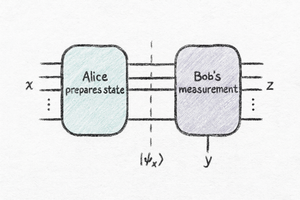Creating a Cat-Scaring Robot with Raspberry Pico and CircuitPython
If you’re a cat owner, you may have faced the challenge of keeping your furry friends away from certain areas of your home. Whether it’s the kitchen countertop, the delicate plants in your garden, or the laundry room, cats have a knack for getting into places they shouldn’t be. But don’t worry, there’s a fun and innovative solution - creating a cat-scaring robot with Raspberry Pico and CircuitPython. In this article, we’ll guide you through the process of building and programming your very own cat-scaring robot, using the power of Raspberry Pico and the simplicity of CircuitPython.

(This document is generated with the help of AI)
Understanding the Basics of Raspberry Pico and CircuitPython
Welcome to the fascinating world of Raspberry Pico and CircuitPython! In this article, we will dive into the details of these incredible technologies and explore their capabilities. So, let’s get started!
What is Raspberry Pico?
Raspberry Pico is not just an ordinary microcontroller board; it is a game-changer in the world of embedded systems. Developed by the Raspberry Pi Foundation, this compact board is equipped with the powerful RP2040 microcontroller chip. This chip is designed to be easy to use, flexible, and cost-effective, making it perfect for both beginners and advanced users.
One of the standout features of Raspberry Pico is its abundance of GPIO (General Purpose Input/Output) pins. These pins allow you to connect various components and sensors, enabling you to build a wide range of projects. Whether you want to create a weather station, a home automation system, or a robot, Raspberry Pico has got you covered!
Introduction to CircuitPython
Now that we have a basic understanding of Raspberry Pico, let’s explore CircuitPython, a beginner-friendly programming language specifically designed for microcontrollers.
CircuitPython simplifies the programming process by providing an easy-to-understand syntax and a vast library of pre-written code for various hardware components. This means that you don’t have to start from scratch when working with sensors, displays, or other peripherals. CircuitPython allows you to quickly get your projects up and running without the need for complex software development environments.
With CircuitPython, you can focus on the logic and functionality of your project rather than getting bogged down in the nitty-gritty details of low-level programming. This makes it an ideal choice for beginners who want to learn about electronics and programming simultaneously.
Moreover, CircuitPython is an open-source language, which means that the community actively contributes to its development. This vibrant community provides support, shares projects, and constantly improves the language, making it a fantastic resource for learners and experienced developers alike.
Whether you are a hobbyist, a student, or a professional, Raspberry Pico and CircuitPython offer a world of possibilities. So, grab your Raspberry Pico board, fire up CircuitPython, and embark on an exciting journey of exploration and creation!
Necessary Components for Building a Cat-Scaring Robot
Building a cat-scaring robot can be an exciting and challenging project. Before diving into the construction and programming, it’s essential to gather all the necessary components to ensure a successful build. Let’s explore the hardware and software requirements in detail.
List of Required Hardware
When it comes to building a cat-scaring robot, having the right hardware is crucial. Here are the essential components you’ll need:
- Raspberry Pico: The Raspberry Pico is a powerful microcontroller board that will serve as the brain of your cat-scaring robot. With its dual-core ARM Cortex-M0+ processor, it provides the necessary computational power for your project.
- Ultrasonic Distance Sensor: An ultrasonic distance sensor is a key component for detecting the presence of a cat. It uses sound waves to measure the distance between the robot and the cat, allowing for precise targeting.
- Servo Motor: A servo motor is responsible for controlling the movement of the robot’s scare mechanism. It allows you to rotate the scare device in a specific direction, ensuring maximum effectiveness in scaring away the feline intruders.
- Buzzer: A buzzer is an audio output device that can produce various sounds. In the case of a cat-scaring robot, it can be used to emit a loud and startling noise, further enhancing the scare factor.
- Battery Pack: To power your cat-scaring robot, you’ll need a reliable battery pack. Make sure to choose one that provides enough voltage and capacity to support the operation of all the components.
- Jumper Wires: Jumper wires are essential for connecting the different components together. They allow for easy and secure electrical connections, ensuring the smooth operation of your robot.
Software Requirements and Installation
Alongside the hardware components, you’ll also need to install specific software to bring your cat-scaring robot to life. Here are the software requirements:
- Raspberry Pi Imager: Raspberry Pi Imager is a tool that helps you install the operating system on your Raspberry Pico. It simplifies the process of setting up the software environment for your robot.
- CircuitPython: CircuitPython is a programming language specifically designed for microcontrollers like the Raspberry Pico. It provides an easy-to-use and beginner-friendly interface for writing code to control your robot’s behavior.
- Adafruit CircuitPython Libraries: Adafruit CircuitPython libraries are a collection of pre-written code modules that extend the functionality of CircuitPython. They provide ready-to-use functions for controlling various components, such as the ultrasonic distance sensor, servo motor, and buzzer.
By installing the necessary software, you’ll have a solid foundation for programming your cat-scaring robot and unleashing its scare tactics on unsuspecting feline intruders.
Designing the Cat-Scaring Robot
Now that we have all the hardware and software requirements sorted, it’s time to design our cat-scaring robot. The design phase involves conceptualizing how the robot will look and function.
Conceptualizing the Robot Design
When designing your cat-scaring robot, consider factors such as size, mobility, and effectiveness. You want a design that is small enough to fit in any space but has enough deterrence features to scare away curious cats.
One possible design for the cat-scaring robot is a compact, cylindrical shape with a sleek, modern aesthetic. The robot could be equipped with wheels for easy mobility, allowing it to navigate different surfaces and corners of a room. The size of the robot should be small enough to fit under furniture or in tight spaces where cats often hide.
In terms of functionality, the robot should have sensors that can detect the presence of cats. An ultrasonic distance sensor could be used to accurately measure the distance between the robot and a cat. This sensor would serve as the robot’s “eyes,” allowing it to identify when a cat is approaching.
Choosing the Right Features for Cat Deterrence
Some features to consider for cat deterrence include:
- Ultrasonic distance sensor to detect cats approaching
- Servo motor to activate a scare mechanism, such as moving arms or a waving flag
- Buzzer to create a loud noise or emit an ultrasonic sound that cats find unpleasant
By combining these features, you can create a robot that effectively keeps cats at bay without causing them any harm.
The ultrasonic distance sensor will play a crucial role in the robot’s ability to detect cats. It will continuously measure the distance between the robot and any nearby objects, including cats. Once a cat is detected within a certain range, the robot will activate its scare mechanism.
The scare mechanism could consist of moving arms or a waving flag. When the robot senses a cat’s presence, the servo motor will be triggered, causing the scare mechanism to move in a sudden and unexpected manner. This sudden movement will startle the cat and discourage it from approaching further.
In addition to the scare mechanism, the robot can also emit a loud noise or an ultrasonic sound that cats find unpleasant. This can be achieved with the help of a buzzer. When the robot detects a cat, the buzzer will be activated, emitting a high-pitched sound that cats find irritating. This sound will act as an additional deterrent, making the robot even more effective in scaring away cats.
Overall, the design of the cat-scaring robot should prioritize both functionality and aesthetics. It should be small and mobile enough to fit into various spaces, while also incorporating features that effectively deter cats. With the right design and features, the cat-scaring robot can provide a practical solution for keeping cats away from areas where they are not wanted.
Assembling the Robot
With the design finalized, it’s time to bring our cat-scaring robot to life. Follow this step-by-step guide to assemble the hardware components.
Step-by-Step Guide to Hardware Assembly
-
Connect the ultrasonic distance sensor to the Raspberry Pico using jumper wires.
-
Connect the servo motor to the Raspberry Pico using jumper wires.
-
Connect the buzzer to the Raspberry Pico using jumper wires.
-
Connect the battery pack to the Raspberry Pico to power the robot.
Tips for Successful Assembly
As you assemble the hardware, keep the following tips in mind:
- Double-check all connections to ensure they are secure.
- Follow the pinout diagram of the Raspberry Pico to connect the components correctly.
- Test each component individually before combining them.
- Use zip ties or adhesive tape to secure the components and prevent them from moving or falling off.
Programming the Robot with CircuitPython
Now that our cat-scaring robot is assembled, it’s time to program it using CircuitPython.
Basic Programming Concepts for the Robot
Before jumping into the code, there are a few programming concepts you should be familiar with:
- Input and output pin control
- Conditional statements
- Loops
- Functions
Writing the Code for Cat Deterrence
Using CircuitPython and the Adafruit CircuitPython library, you can easily write code to control the robot’s behavior. The code will involve reading sensor values, activating the scare mechanism, and producing deterrent sounds.
To ensure that your code effectively deters cats, consider implementing randomized behavior patterns that keep the cats guessing and avoid habituation.
With your cat-scaring robot fully programmed, you’re ready to deploy it in the areas where you want to keep your feline friends away. Enjoy the satisfaction of watching them deterred by your ingenious creation!
This article was generated with the help of AI. The cat-scaring robot is a joke. Please don’t scare your cats. But do checkout ByWord.AI




